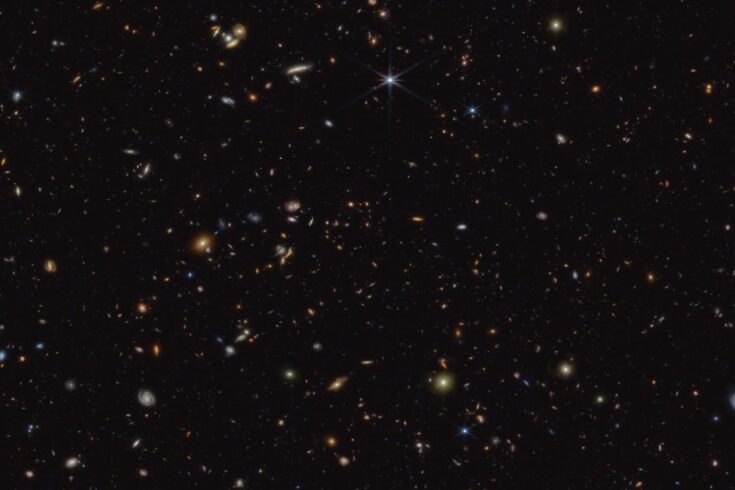Science and Technology Facilities Council
|
|
James Webb Space Telescope advances our understanding of galaxies
New research that used data from JWST shows that crucial building blocks of planets and stars could form much earlier in the life cycle of galaxies.

Top image: Credit: European Space Agency
An international team of astronomers has for the first time detected the presence of carbon-rich dust grains in the first billion years of the Universe.
These small diamond-like particles found between the stars are integral to the formation and evolution of galaxies such as the Milky Way.
The team is supported in part by UK Research and Innovation (UKRI) and the Science and Technology Facilities Council (STFC).
Answering fundamental questions
Early stars in a galaxy are made up of only hydrogen and helium. These stars though give rise other elements including carbon and oxygen through events such as supernova explosions.
Some of this carbon coalesces into microscopic dust grains that enable gasses to cool, and stars and planets to form as the galaxy grows and matures.
For this study, scientists used the James Webb Space Telescope (JWST) to look at light from extremely distant galaxies that are much younger than our own and found that these dust grains were present much earlier than predicted.
Original article link: https://www.ukri.org/news/james-webb-space-telescope-advances-our-understanding-of-galaxies/


